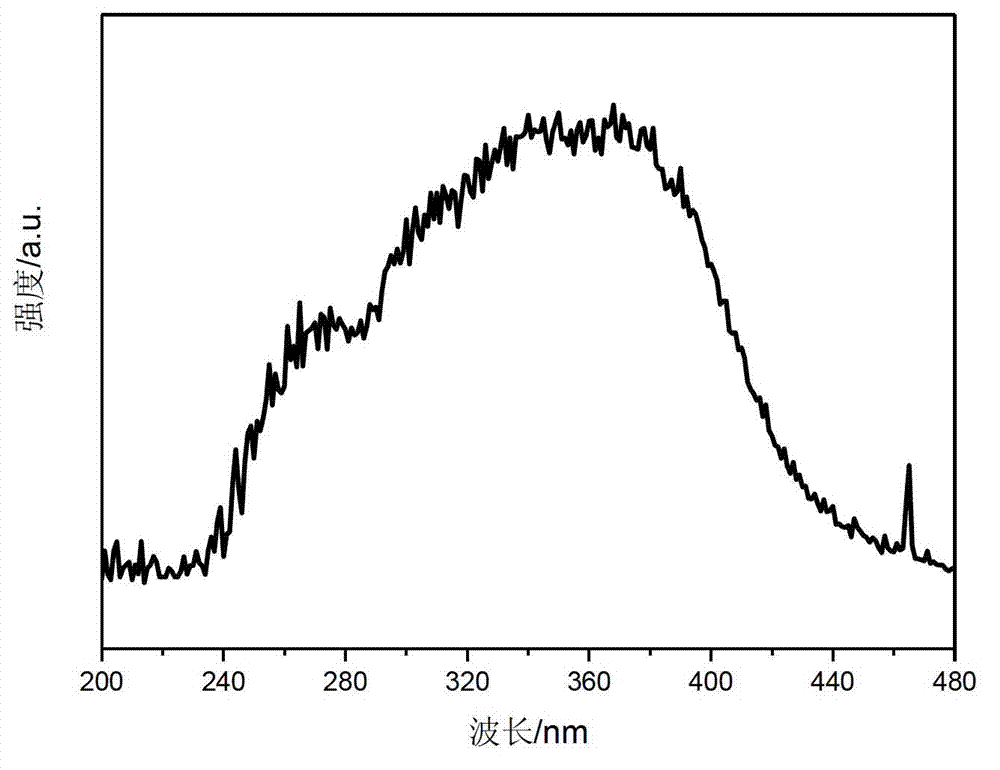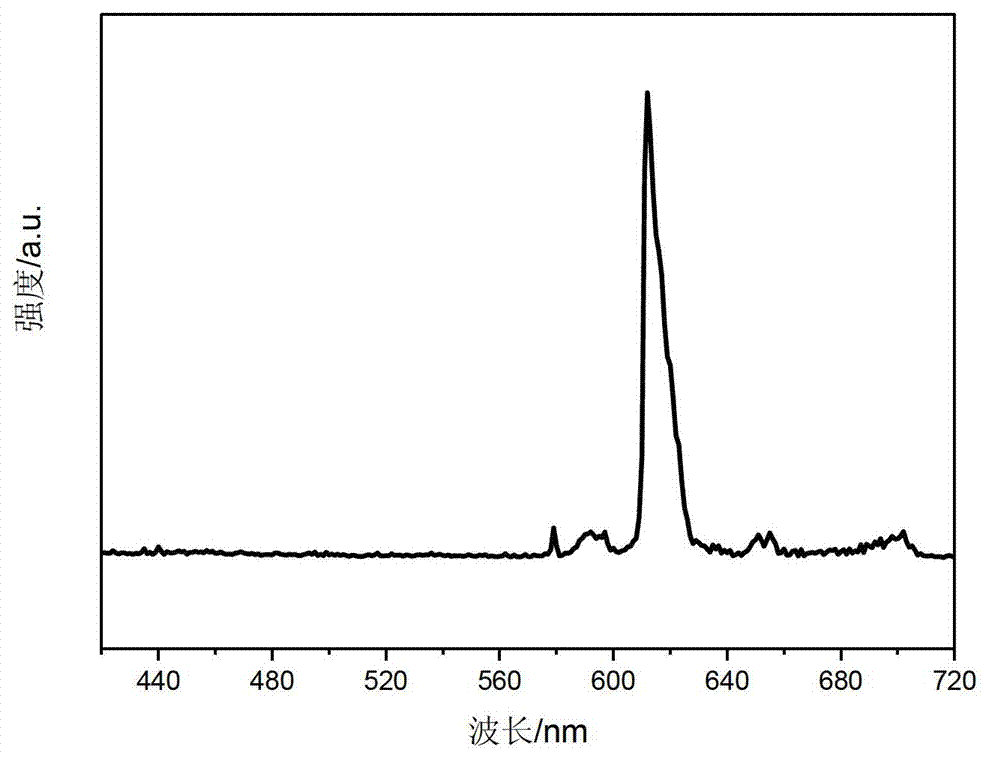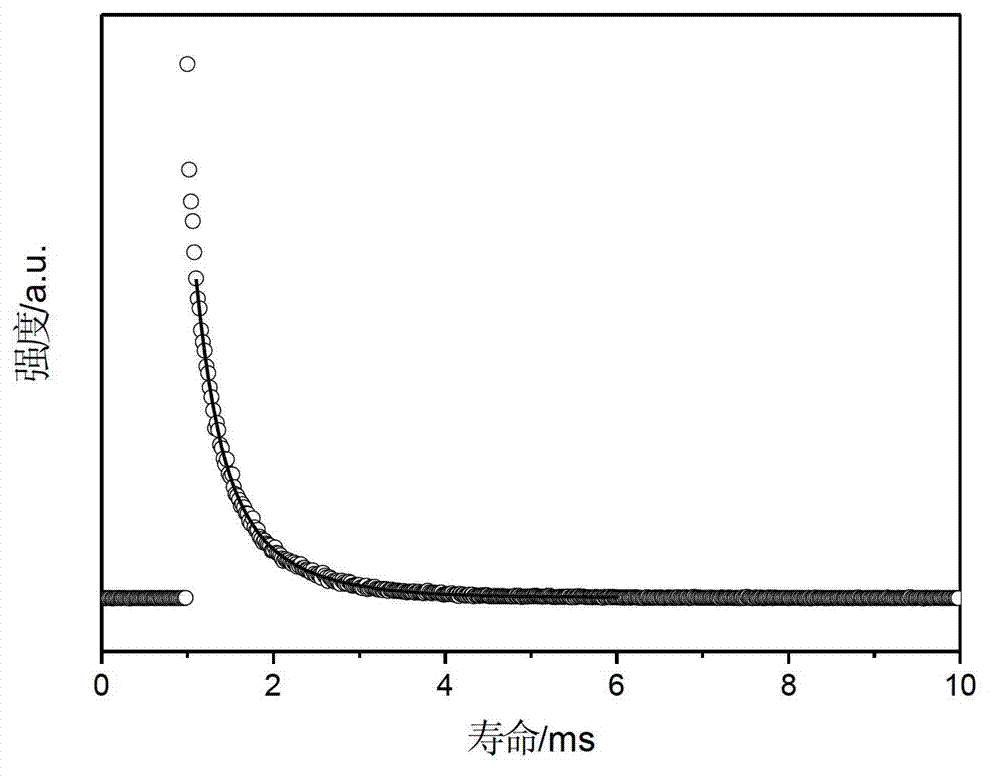Cage oligomeric silsesquioxane and rare earth ion luminescent material thereof
A technology of polysilsesquioxane and rare earth ions, which is applied in the direction of luminescent materials, silicon organic compounds, chemical instruments and methods, etc., can solve the problems of rare research reports, achieve strong photostability, rich colors, and fluorescence long life effect
- Summary
- Abstract
- Description
- Claims
- Application Information
AI Technical Summary
Problems solved by technology
Method used
Image
Examples
Embodiment 1
[0032] ① Dissolve 580.0mg (10.30mmol) of potassium hydroxide (commercially available) in 9mL of dimethyl sulfoxide, heat in an oil bath at 80°C for 5min until the solution turns yellow, then dissolve 335.5μL (2.15mmol) of 1,6-hexane Add dithiol (commercially available), 575.0mg (2.15mmol) 4'-chloro-2,2':6',2''-terpyridine (commercially available) into the above yellow solution, heat and stir in an oil bath at 70°C for 4h Then stop heating, add 100mL double-distilled water, 30mL dichloromethane to make it precipitate, and centrifuge to obtain a white powdery substance, which is a terpyridine derivative, which is recorded as TpySH.
[0033] ②, Dissolve 137.7mg (0.2175mmol) of octavinyl cage oligomeric silsesquioxane (VPOSS), 663.8mg (1.74mmol) of the above terpyridine derivative (TpySH) in 10mL of chloroform (99.5%) , drop two drops of n-propylamine (2% of the mass of raw material VPOSS) to catalyze, stir and heat in an oil bath at 50°C for 24h to obtain a colorless solution.
...
Embodiment 2
[0045] In the embodiment 1, the steps are wrong! Reference source not found. The obtained terpyridine derivative (TpySH) is replaced with acrylic acid (AA) (commercially available), and the oligomeric silsesquioxane compound is denoted as VPOSS-8AA, and all the other conditions are the same as in Example 1, and finally a rare earth / cage type Oligomeric silsesquioxane synthetic rare earth luminescent material.
[0046] The VPOSS-8AA was determined by nuclear magnetic analysis and mass spectrometry, and the luminescent properties of the material (such as absorption spectrum, emission spectrum, excitation spectrum, fluorescence decay curve, etc.) Thermal stability was determined by scanning calorimetry.
[0047] The NMR of the tested ionic liquid is as follows:
[0048] 1 H NMR (DMSO): δ7.953 (s, 8H), δ6.090 (d, 16H), δ2.891 (s, 27H), δ2.731 (s, 25H).
[0049] The physical and chemical parameters of the material tested are as follows:
[0050] Excitation spectrum (detection...
Embodiment 3
[0054] Change the rare earth europium chloride in step ④ in Example 1 to rare earth neodymium chloride to prepare a luminescent material. All the other conditions are with embodiment 1.
PUM
| Property | Measurement | Unit |
|---|---|---|
| fluorescence lifetime | aaaaa | aaaaa |
Abstract
Description
Claims
Application Information
 Login to View More
Login to View More - R&D
- Intellectual Property
- Life Sciences
- Materials
- Tech Scout
- Unparalleled Data Quality
- Higher Quality Content
- 60% Fewer Hallucinations
Browse by: Latest US Patents, China's latest patents, Technical Efficacy Thesaurus, Application Domain, Technology Topic, Popular Technical Reports.
© 2025 PatSnap. All rights reserved.Legal|Privacy policy|Modern Slavery Act Transparency Statement|Sitemap|About US| Contact US: help@patsnap.com



